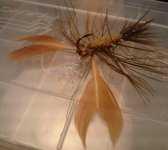Fredrick
Well-known member
Move over Rusty Crawfish here comes its bigger self reproducing cousin the Marbled Crawfish . Excluding the effects on native crawfish I wonder what kind of effect this crawfish would have on local fish populations. :-o
http://www.msn.com/en-us/news/technology/massive-crayfish-that-didnt-exist-25-years-ago-are-capable-of-cloning-themselves-%e2%80%94-and-its-terrifying-scientists/ar-BBIMqji?li=BBnb7Kz&ocid=UE07DHP
http://www.ibtimes.com/cloning-nature-all-marbled-crayfish-clones-one-individual-female-2650645
http://www.msn.com/en-us/news/technology/massive-crayfish-that-didnt-exist-25-years-ago-are-capable-of-cloning-themselves-%e2%80%94-and-its-terrifying-scientists/ar-BBIMqji?li=BBnb7Kz&ocid=UE07DHP
http://www.ibtimes.com/cloning-nature-all-marbled-crayfish-clones-one-individual-female-2650645





